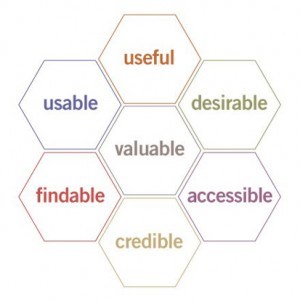 Usability is being emphasized more and more by companies and is being taken a lot more seriously in recent years. In this note, we will discuss and review some key concepts related to usability to help you to better understand them.
Usability is being emphasized more and more by companies and is being taken a lot more seriously in recent years. In this note, we will discuss and review some key concepts related to usability to help you to better understand them.
Usability Basics
Usability measures the quality of a user’s experience when interacting with a product or system ? whether it is a Web site, a software application, mobile technology, or any user-operated device or system.
Usability is a combination of factors including:
- Ease of Learning — How fast can a user who has never seen the user interface (UI) learn it sufficiently well to accomplish basic tasks?
- Efficiency of Use — Once an experienced user has learned to use the system, how fast can he or she accomplish tasks?
- Memorability — If a user has used the system before, can they remember enough about the system to use it effectively the next time? Or, do they have to start over and learning everything again?
- Error Frequency and Severity — How often do users make errors while using the system? How serious are these errors and how do users recover from these errors?
- Subjective satisfaction — How much does the user like using the system UI?
Measuring Usability
During a usability testing, we can capture the two types of usability metrics.
These metrics include:
- Performance data (what actually happened)
- Preference data (what participants thought)
Once we gather the metrics, we can use the data to evaluate the usability of our products and make recommendations for product improvements to fix usability issues.
User-Centered Design
User-Centered design (UCD), sometimes called “usability engineering,” is an approach for employing usability in product design. It is a structured product development methodology that involves users throughout all stages of development. In order to create a Web site that meets users’ needs, this approach considers an organization’s business objectives and the user’s needs, limitations, and preferences. UCD involves several methods, each applied at appropriate times, including:
Defining business and user goals and objectives
- Gathering requirements
- Evaluating design alternatives, building and testing prototypes
- Analyzing usability problems, testing a site with users, and proposing solutions to problems
Usability is typically measured by conducting usability testing that fits in as one part of the UCD process.
Usability testing is a technique used to evaluate a product by testing it with representative users. In these testing scenarios, users will try to complete typical tasks (e.g.: find information or use functionality on the Web site) while observers watch, listen and takes notes.
The purpose of usability testing is to identify any potential usability problems, collect quantitative data on participants’ performance and determine participants’ satisfaction with the product.
When to start Usability Test?
Usability testing lets the design and development teams identify usability problems before they get coded. So, usability testing should be done early and often. The earlier usability problems are found and fixed, the less expensive the fixes will be in the long run.
What to learn from Usability Testing?
During usability testing, we will pay particular attention to the following two things:
- Whether participants are able to complete their routine tasks successfully and how long it takes to do that. This helps us to identify changes required to improve user performance.
- How satisfied participants are with our products.
What to do after Usability Testing?
Usability testing is not just a milestone to be checked off on the project schedule. The team must consider the findings, set priorities, and change the prototype or site based on what happened in the usability test.
Why needs Usability, UCD and Usability Testing?
Cost must be considered by any company.
Usable systems can save money by helping to:
- Increase productivity and customer satisfaction
- Increase sales and revenues
- Reduce development time and costs, in addition to maintenance costs
- Decrease training and support costs
Good product usability increases customer satisfaction, productivity, and leads to customer trust and loyalty. In today’s society and culture, consumers have become more and more demanding about usability. Moreover, applying usability in the initial design can greatly reduce extensive redesign, maintenance, and customer support costs.
Usability testing helps to find the best solution to balance time, budget and resources.
The end
